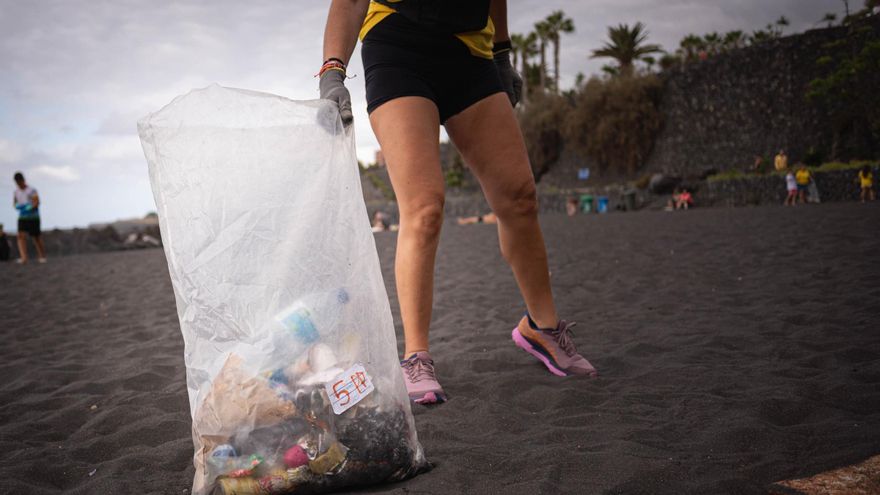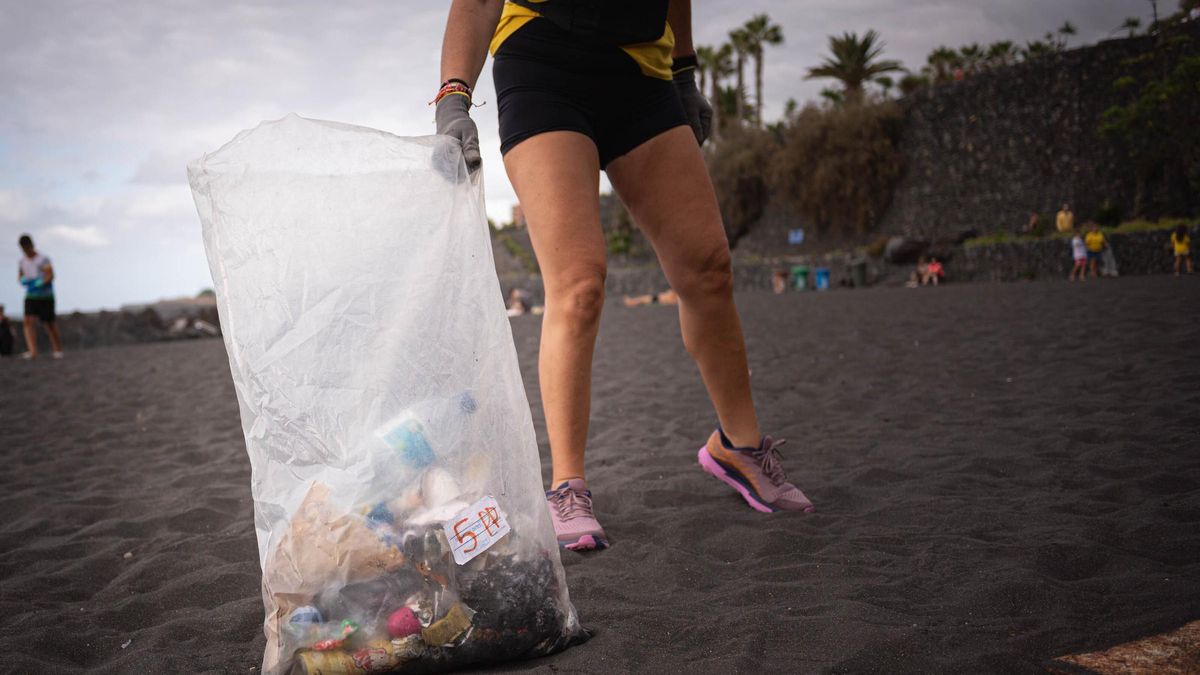
In front of the beach bar at Punta Brava, dozens of people gathered around a table waiting for the first instructions from the Rayuela Association. On Tuesday, the organisation launched the project Social Infrastructure: The People’s Palaces of Tenerife, in collaboration with the platform Stop Sewage Discharges into the Sea and the initiative Precious Plastics Canarias. The People’s Palaces aims to strengthen mutual support, combat isolation, and prevent emotional distress in neighbourhoods that feel the effects of urban pressure and tourism.
The attendees were organised into two groups. The first focused on collecting cigarette butts, starting from Playa del Castillo and moving towards Punta Brava. The second group concentrated on collecting plastics, beginning from Playa Chica. Equipped with perforated baskets to separate sand from waste, gloves, and bags to store their findings, the volunteers embarked on their task with enthusiasm, determined to transform the shoreline with every step.
Project
The project originated from the needs identified by Rayuela in its operations. The organisation, which develops employment and social action programmes in various neighbourhoods across the island, recognised the necessity for a proposal that not only focused on job integration or temporary assistance but also built lasting connections.
“We needed to create a project that linked us to the territory, protecting the location while responding to the interests of our team,” explains Irene Ruán, the initiative’s coordinator. This led to the idea of the People’s Palaces, a symbolic and real space for neighbours to reconnect.
The choice of Punta Brava and San Andrés was intentional. Both areas share a common characteristic: the significant impact of holiday rentals on limited territories. “We considered these particular places because the presence of tourist accommodations is evident, and this is also something felt by the locals,” details Ruán. The urban pressure adds to a deep community roots linked to traditions and local memory, which Rayuela aims to recover and strengthen.
Punta Brava
The response in Punta Brava has been positive, albeit not without challenges. “Initially it’s hard because it’s a community process, and the neighbourhood is clearly distressed by the issues related to tourism and the beach,” acknowledges the coordinator. However, dialogue has begun to pave the way, as conversations with locals have helped establish a relationship of trust, and the neighbourhood has realised that “we are a channel for conveying their concerns and trying to build together.”
Indeed, the project starts with a mental health study conducted in partnership with the University of La Laguna, which will measure the impact of the intervention and assess the effectiveness of the model in contexts of population displacement driven by tourism.
“The greatest risk to community life is loneliness,” asserts Ruán. “We tend towards an individualistic society, where, when a problem arises, we look for individual rather than collective solutions. That’s why we consider it essential to reinforce anything related to community support, with networks and neighbourhood ties.”














